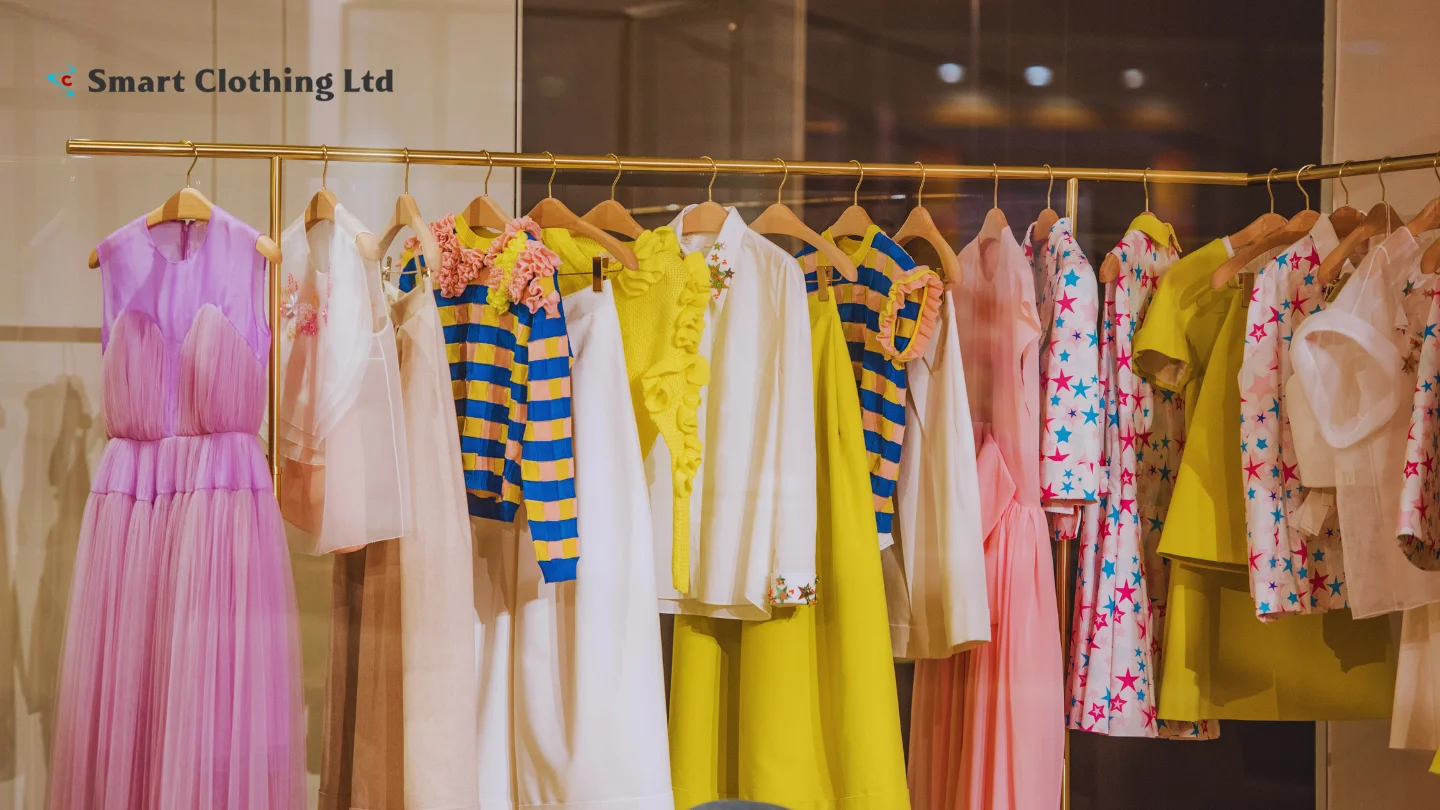
The average clothing size for a woman in the United States is between a size 16 and 18, a change from previous years when the average was closer to a size 14.
The average size varies internationally, as different countries have unique body types, genetics, diets, and lifestyles.
Clothing sizes can differ widely depending on the country, brand, and even fabric type. Understanding the “average women’s clothing size” helps both consumers and fashion brands create garments that fit real body shapes, not just industry ideals.
Over the years, the idea of an “average size” has shifted as lifestyles, diets, and fashion standards have changed.
In this article, we’ll explore how clothing sizes are defined, how they differ worldwide, and how you can find your true fit with confidence.
Understanding Clothing Sizes
Clothing sizes are not universal. They vary depending on regional standards and brand preferences. The most common systems are US, UK, EU, and Asian size charts, each based on different body measurements. For example, a US size 8 is roughly equivalent to a UK size 12 or an EU size 40.
Another important concept is vanity sizing, which happens when brands adjust their measurements to make customers feel they wear a smaller size. For example, a size 10 in one brand might fit like a size 8 in another. This marketing strategy often confuses, making it harder to shop across different labels.
It’s also important to note that clothing fit depends on the cut, fabric stretch, and design. Two garments labeled with the same size might feel completely different because brands use their own fitting models and measurement charts.
International Size Conversion Chart for Women’s Clothing:
| US Size | UK Size | EU Size |
|
14 |
18 | 46 |
|
16 |
20 | 48 |
|
18 |
22 |
50 |
|
20 |
24 | 52 |
|
22 |
26 | 54 |
|
24 |
28 |
56 |
- United States: The average is currently between a size 16 and 18.
- United Kingdom: The average is around a UK size 16 (similar to a US size 16).
- Europe: The average size is close to a size 16 or EU 44.
- Japan: The average size is smaller, around a US size 7–9 or EU 36–38.
What Is the Average Woman’s Clothing Size in America?
The average clothing size of women in America has changed noticeably over the past few decades. Today, studies from the Centers for Disease Control and Prevention (CDC) and various fashion research sources show that the average U.S. woman wears between a size 16 and 18. This shift reflects lifestyle, dietary, and body diversity changes compared to the 1980s and 1990s, when the average was closer to a size 12–14.
According to the CDC’s National Health and Nutrition Examination Survey (NHANES), the average American woman is about 5 feet 4 inches (163 cm) tall and weighs approximately 170 pounds (77 kg). Her average body measurements are roughly bust: 41 inches, waist: 34 inches, and hips: 43 inches. These updated figures represent a more inclusive view of women’s bodies today, highlighting that real-world sizes differ significantly from old-fashioned standards.

Over time, U.S. fashion brands have begun embracing size inclusivity, expanding their ranges to reflect real consumer needs. This progress has helped shoppers find clothing that fits comfortably and supports body confidence, moving away from the narrow “sample size” ideals of the past.
When compared internationally, the U.S. average size is generally larger. The UK average is about size 16, Europe averages around size 44, while Japan is typically US size 7–9.
Average U.S. Women’s Body Measurements
| Measurement | Average (U.S.) |
| Height | 5’4″ (163 cm) |
| Weight | 170 lbs (77 kg) |
| Bust | 41 inches |
| Waist | 34 inches |
| Hips | 43 inches |
How to Accurately Measure Your Clothing Size
Finding your correct clothing size starts with accurate body measurements. You can easily take them at home using a soft measuring tape and a mirror. Stand naturally and avoid pulling the tape too tight for the most accurate results.
Step-by-step guide:
- Bust: Measure around the fullest part of your chest, keeping the tape level under your arms and across your shoulder blades.
- Waist: Locate your natural waistline, usually just above your belly button. Measure around this area while keeping the tape snug but not tight.
- Hips: Stand with your feet together and measure around the widest part of your hips and buttocks.
Once you have these numbers, compare them with the brand’s size chart to find your best match. Remember that sizes may vary slightly depending on the fabric, cut, and brand.
Fit Checklist:
- Tops: Ensure the bust area isn’t pulling or gaping.
- Bottoms: The waistband should sit comfortably without digging in.
- Dresses: The fit should allow easy movement without excess tightness around the hips or shoulders.
Why Size Standards Differ Across Brands
Ever wondered why your “go-to size” fits perfectly in one brand but feels off in another? You’re not alone, and here’s why it happens:
✅ 1. Vanity Sizing
Brands often adjust their measurements to make customers feel they wear a smaller size. For example, a size 12 in one brand could fit like a size 10 in another. It’s a marketing trick that boosts confidence but creates sizing confusion.
✅ 2. Brand-Specific Fit Models
Each clothing brand uses its own “fit model,” a person whose measurements define that brand’s sizing chart. A brand that designs for athletic builds will have very different proportions than one targeting curvier figures.
✅ 3. Premium vs. Fast-Fashion Labels
High-end brands tend to use smaller, more tailored fits to maintain an exclusive image, while fast-fashion brands often use relaxed cuts to appeal to a wider audience.
✅ 4. Inclusive and Body-Positive Fashion
The industry is evolving. More brands now embrace inclusive sizing, designing clothes for all body shapes, not just sample-size models.
Comparison: Women’s vs Men’s Average Sizes
Shopping for men, women, or unisex clothing? Knowing the average sizes for both genders can help you choose the right fit.
1. Shirts & Tops
- Women: Average U.S. size is 16–18, with bust around 41 inches.
- Men: Average U.S. size is Large (L), chest around 40–42 inches.
2. Pants & Bottoms
- Women: Average waist is 34 inches, hips 43 inches.
- Men: Average waist is 38 inches, inseam around 32 inches.
3. Body Proportions
Men and women have different body shapes: men typically carry weight around the shoulders and waist, women around hips and bust. This affects how garments are designed and labeled.
Average Measurements Comparison Table:
| Measurement | Women (U.S.) | Men (U.S.) |
| Chest / Bust | 41 in | 40–42 in |
| Waist | 34 in | 38 in |
| Hips | 43 in | 40 in |
| Height | 5’4” | 5’9” |
| Pant Size | 16–18 | 32–34 |
💡 Smart Clothing Ltd Message:
At Smart Clothing Ltd, we believe every size is beautiful. As an apparel manufacturing partner, we design for real people, offering inclusive sizing and precision fit for global brands. Our mission is to make clothes that truly fit real bodies.
FAQs
What size is considered “average” for women?
The average clothing size for women in the U.S. is between 16 and 18, with measurements around bust: 41 in, waist: 34 in, hips: 43 in. Keep in mind, this is only a reference — body shapes vary widely.
How can I find my perfect fit when sizes vary by brand?
Take your measurements at home using a soft measuring tape: bust, waist, and hips. Always compare them with each brand’s size chart. Remember, fabric, cut, and style also influence fit.
What is vanity sizing, and why does it exist?
Vanity sizing occurs when brands label clothes smaller than their actual measurements to make customers feel slimmer. It’s a marketing tactic but can make shopping across brands confusing.
What are the most popular women’s shoe sizes?
In the U.S., the most commonly worn women’s shoe size is 8.5, though sizes vary based on age, region, and foot shape.
How do men’s and women’s average shirt sizes differ?
- Women: Average U.S. size 16–18, bust around 41 inches
- Men: Average U.S. size Large (L), chest around 40–42 inches
Men and women have different body proportions, which is why sizes aren’t directly interchangeable.